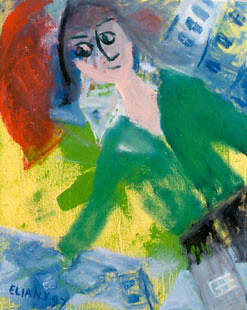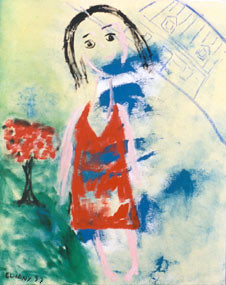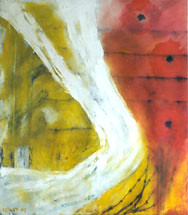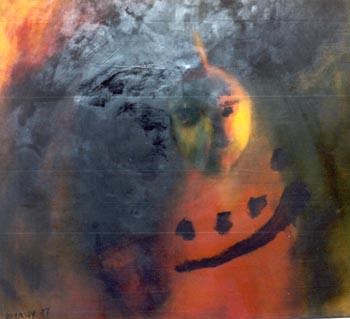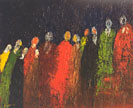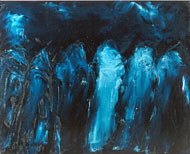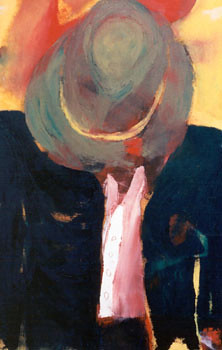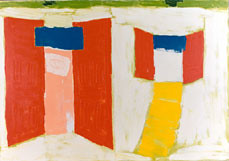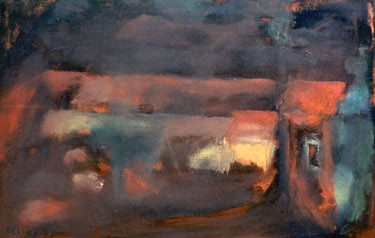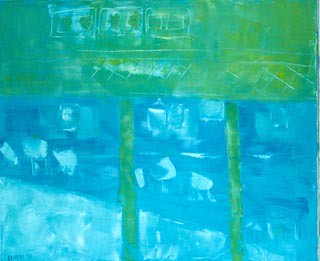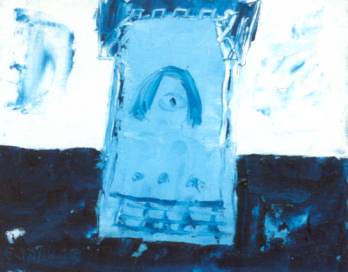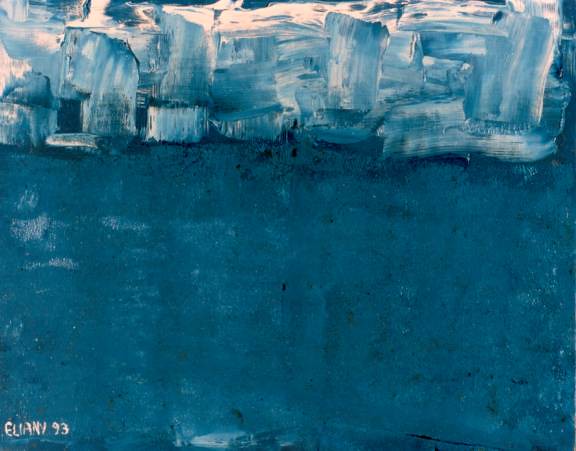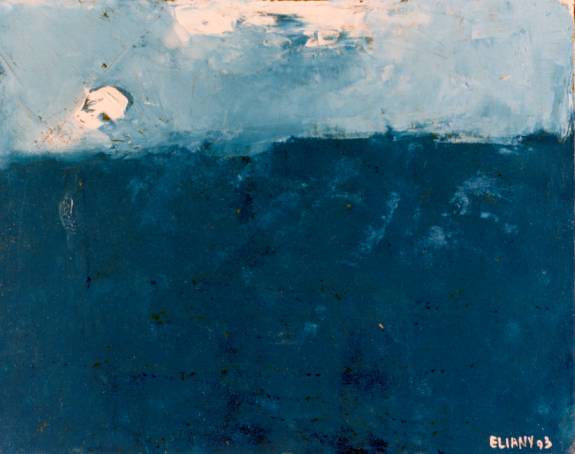Marc Eliany
Publicationshttp://jewishmoroccanarchive.co/publications-eliany-marc
Art Publications
Ces Pays qui m’habitent, 2003 dans/in Kaouk, A. Musee Canadien des Civilisations, Gatineau, Quebec, Canada
Artistic Creation and the Moroccan Jewish Diaspora, Art Engine, Virtual Publications, 2002 www.artengine.ca/eliany/
The Last Jews of Ifrikia, Art Engine, Virtual Publications.ca , 1999 www.artengine.ca/eliany/
Eroba Eroba, Art Engine, Virtual Publications, 1998 www.artengine.ca/eliany/
Gates of Welcome, Art Engine, Virtual Publications, 1997 www.artengine.ca/eliany/
Moroccan Jewry Publications
Burial Societies of Moroccan Jews and the Fes Jewish Cemetery, Art Engine, Virtual Publications, 2002 www.artengine.ca/eliany/ also in Juifs de Fes, Editions Elysee, 2005 Montreal
Dictionnaire Biographique du Monde Juif S?pharade et M?diterran?en
in collaboration with Joseph Levy and Josu? Elkouby. 2001, Editions Elys?e www.artengine.ca/eliany/
Mind and Soul in Jewish Morocco, Art Engine, Virtual Publications, 2005 www.artengine.ca/eliany/
Customs and traditions in Jewish Morocco Art Engine, Virtual Publications, www.artengine.ca/eliany/
The meaning of names of Mediteranean Jews Art Engine, Virtual Publications, www.artengine.ca/eliany/
Poetry
On wine and women, Poems, Virtual Publications, 2001 www.artengine.ca/eliany/
On Creation, Poems, Virtual Publications.ca www.artengine.ca/eliany/
Plays
Rezadeira, a Play, Art Engine, Virtual Publications, 1997 www.artengine.ca/eliany/
Fables for young and old
Genevi?ve et le petite oiseau des bois, Virtual Publications, 1997 www.artengine.ca/eliany/
Soleil Soleil Virtual Publications, 1997 www.artengine.ca/eliany/
Israeli Society Research
Informal Education – A Structural Approach
in collaboration with R. Kahane and T. Rappoport, Academon Press, 1976.
A Brief History of the Jews Virtual Publications, www.artengine.ca/eliany/
Being Israeli – Analysis of the Israeli Society Virtual Publications, www.artengine.ca/eliany/
The Rise of the Religious Right in Israel Virtual Publications, www.artengine.ca/eliany/
A Just Israeli Society – A Dream or an Illusion Virtual Publications, www.artengine.ca/eliany/
Survey Research
Drug Abuse in the Global Village Virtual Publications, www.artengine.ca/eliany/
Women’s Use of Alcohol, Tobacco and other Drugs in collaboration with M. Adrian,
and C. Lundy. 1996,Toronto: Addiction Research Foundation.
Alcohol and other Drugs Use by Elderly Canadians: A National Alcohol and other Drugs Survey (1989) Report
in collaboration with J. Clarke 1993, HWC.
Alcohol and other Drugs Use by Canadians: A National Alcohol and Other Drugs Survey (1989) Technical Report,
in collaboration with N. Giesbrecht, M. Nelson, B. Wellman and S. Wortley, 1992, HWC.
Alcohol and other Drugs Use by Canadian Youth: A National Alcohol and other Drugs Survey (1989) Report
in collaboration with Scot Wortley and Ed Adlaf, 1992, HWC.
The Smoking Behaviour of Canadians
in collaboration with Jean-Rene Courtemanche, 1992, HWC.
How Effective Are Alcohol and Other Drugs Prevention and Treatment Programs:
A Review of Evaluation Studies, in collaboration with Brian Rush, 1992, HWC.
The National Alcohol and Other Drugs Survey Highlight Report,
in collaboration with N. Giesbrecht, M. Nelson, B. Wellman and S. Wortley, 1990, HWC.
Alcohol in Canada, editor, 1989, HWC.
Licit and Illicit Drugs in Canada, editor, 1989, HWC.
Other papers
?The Need for A Woman Centered Approach to Deal with Women?s Use of Alcohol, Tobacco and Other Drugs? with Adrian et. al., in News Magazine Women and Drugs, Second Edition, August 1995, Rotterdam, The Netherlands
“Perspectives feminites sur l’usage de l’alcool, du tabac et des drogues chez les femmes Canadiennes”, en collaboration avec Adrian et. al., presente au 61eme congres annuel de l’association latine pour l’analyse des systemes de sante, Montreal, Quebec, Canada, Mai 1995
“Women’s Use of Alcohol, Tobacco and other Drugs in Canada:
The Need for a Women Centred Approach to Deal with the Issues”, in collaboration with Adrian et. al., presented at the VI International Conference on the Reduction of Drug Related Harm, Florence, Italy, 26-30 March, 1995.
“Drug Abuse, Consequences and Responses, A Regional Report: Asia and the Pacific (1992)” UNDCP, Vienna, 1994.
“Examination of the World Situation with Respect to Drug Abuse, including Illicit Demand, Illicit Trafficking and Illicit Supply: Drug Abuse Extent, Patterns and Trends” E/CN.7/1993/4 Report of the Secretariat
“Examination of the World Situation with Respect to Drug Abuse, including Illicit Demand, Illicit Trafficking and Illicit Supply: Drug Abuse Extent, Patterns and Trends” E/CN.7/1994/4 Report of the Secretariat
“Country Drug Abuse and Treaty Implementation Profiles“, 1994
reports of IDAAS, the International Drug Abuse Assessment System.
Eliany M. 1988, “The Canadian National Alcohol and Other Drugs Survey: An Analysis Plan”.
National Action Conference on Drug Abuse, Montreal, Quebec, Canada.
Eliany M. and N. Giesbrecht, 1989, “Reasons for Drinking, Demographic Characteristics and Level of Consumption: Preliminary Results from the Canadian Drinking and Driving Survey”, Kettil Bruun 15th Annual Epidemiology Symposium, Maastricht, The Netherlands.
Eliany M. 1990, “Selected Results and Implications of the Canadian Alcohol and Other Drugs Survey”.
Northern Ontario Teleconference Network. Sudbury, Ontario, Canada.
Eliany M. and M. Parkin, 1990, “Drinking and Cultural Identification: Findings from the 1989 National Alcohol and Other Drugs Survey”.
CPHA, Toronto, Ontario.
Eliany M. 1992, “Drinking and Smoking Surveys in Canada: Some Sampling implications”.
Kettil Bruun 18th Annual Epidemiology Symposium, Toronto, Ontario, Canada.
Eliany M., S. Wortley, and E. Adlaf, 1992, “Drinking Among Canadian Youth and Related Consequences on Self and Others”.
Kettil Bruun 18th Annual Epidemiology Symposium, Toronto, Ontario, Canada.
Eliany M. and B. Rush, 1992, “How Effective Are Alcohol and Other Drug Prevention and Treatment Programs? A Review of Evaluation Studies”. Kettil Bruun 18th Annual Epidemiology Symposium, Toronto, Ontario, Canada.
Eliany Marc, 1992, “Canada’s Drug Strategy and Related Targeted Research: Some Reflections”.
ICAA, 36th International Congress on Alcohol and Drug Dependence, Glasgow, Scotland.
Parkin M. and M. Eliany, 1990, “The Socio-cultural Context of Drinking in Canada: Findings from the 1989 National Alcohol and Other Drugs Survey”. Kettil Bruun 16th Annual Epidemiology Symposium, Budapest, Hungary.
Wortley S.N. and M. Eliany, 1990, “Personal versus Social Reasons for Drinking: New Evidence from Canada”.
Kettil Bruun 16th Annual Epidemiology Symposium, Budapest, Hungary.
Salazar V. and M. Eliany, 1990, “The Tangible Consequences of Alcohol Use: Examining Indicators of Multiple Consequence Incidence Rates in a Random Sample Of Canadians”. Kettil Bruun 16th Annual Epidemiology Symposium, Budapest, Hungary.
Wortley S.N., V. Salazar and M. Eliany, 1990, “Estimating Drinking Behaviour in Canada: A Comparative Analysis of Three Distinct Measures of Alcohol Consumption”. Kettil Bruun 16th Annual Epidemiology Symposium, Budapest, Hungary.
Mckim W.A., B.L. Mishara, M. Eliany, J. Clarke, 1990, “Using Data From Canadian National Surveys to understand Aging and Alcohol and Drug Use”. Canadian Association on Gerontology, 19th Annual Scientific and Educational Meeting, Victoria, B.C., Canada.
Correspondence:
67 Chesterton drive,
Ottawa, Ontario, Canada K2E 5T4
eliany.marc@gmail.com
Websites:
www.artengine.ca/eliany/
www.virtualpublications.ca
www.civilization.ca/expo/eliany/
Internet search key words
eliany
Moroccan Jewry Documentation
skype eliany10

